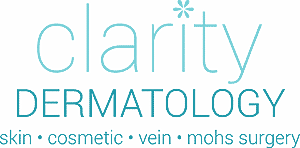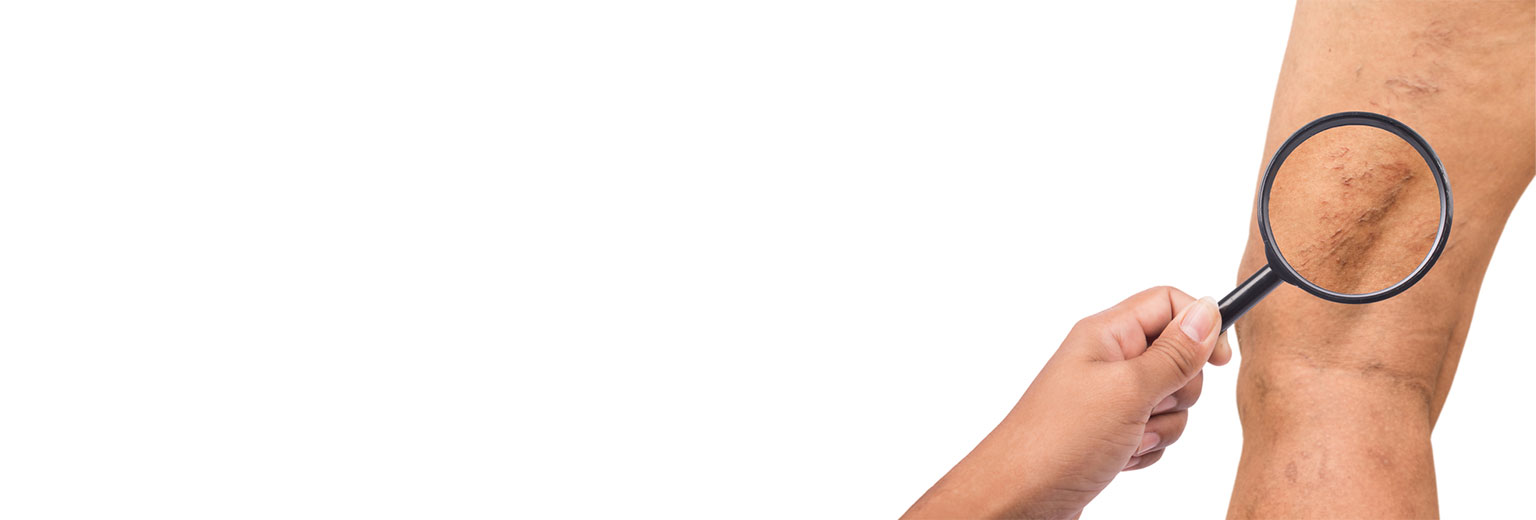What Is Ambulatory Phlebectomy For Varicose Veins?
Ambulatory phlebectomy is a procedure which allows for the removal of unsightly and painful varicose veins through one or more very small incisions. These veins are often the result of a poorly-functioning saphenous vein system (see Endovenous Laser Ablation), and they can often be the cause of more varicose veins over time.

What Should I Expect From My Ambulatory Phlebectomy?
The ambulatory phlebectomy procedure is done in the office under local anesthesia. The vein is carefully identified and marked, and the area is then gently numbed with a dilute anesthetic. After placing anesthetic, the vein is gently removed through one or more small incisions (usually 2-5 mm in length). After the vein is carefully removed, the incision is usually closed with Steri-Strips and the leg is wrapped with a compression dressing or a compression sock is worn. The procedure typically takes 30-45 minutes.
Ambulatory Phlebectomy Recovery Expectations
Following the ambulatory phlebectomy procedure, strenuous activity and exercise are limited for at least one day. We also ask that patients not submerge their leg underwater for at least 1 week following the procedure. Showers are permitted after 24 hours. Bruising, tenderness, or numbness is normal to have around the operative site and will resolve with time. A small scar (or scars) may be present following the procedure, but these are generally very small and tend to blend in with the surrounding skin over time. Bleeding and infection are uncommon side effects; if you have significant bleeding after the procedure, elevate your extremity and apply direct pressure for 15 minutes continuously. You may then remove the dressing and reapply a clean dressing. If you have continued bleeding, or if you suspect an infection or any other serious complication, please contact the office at any time.
What Are The Post-Procedure Care Instructions?
- Do not exercise for one day following the procedure; you may resume light exercise after 1 day as tolerated.
- Keep dressings clean and dry for at least 24 hours.
- Leave the Steri-Strips on the surgical site until they peel off; if you would like, you may trim the edges as they peel off. Once the Steri-Strips peel off, you may apply a small amount of petrolatum ointment (i.e., Vaseline, Aquaphor) to the spots until they heal completely.
- You may take over the counter pain medicine, such as acetaminophen (i.e., Tylenol) or ibuprofen (i.e., Advil or Motrin) as directed, should you have any pain.
- Please call if you experience severe pain or any sign of infection such as redness, throbbing, warmth, or if there is any pus draining from the incision. This is a rare complication.
Ambulatory Phlebectomy Frequently Asked Questions
Ambulatory phlebectomy is generally well-tolerated by our patients. We take care to numb the treatment area carefully so as to minimize your discomfort. Once you are numb, there is no pain and the procedure is very tolerable.
Procedures on the lower leg carry a slightly increased risk of infection, and antibiotics are sometimes indicated. Dr. Jensen will review your medical history at your initial consultation to help you determine if antibiotics are recommended prior to your procedure.
Generally, the ambulatory phlebectomy procedure takes 30-45 minutes to perform.
Several easy steps can be taken to ensure a positive experience and an excellent outcome. Eat a normal meal (breakfast or lunch) as you would on any other day; you do not need to be fasting. Take your prescription medications as per routine unless instructed otherwise.
Please tell us if you have a history of migraines, blood clots, excessive bleeding, require antibiotics for a regular dental cleaning, are taking any blood thinners, or if you may be pregnant.
We wish to ensure that your questions are answered and that you are comfortable with the procedure. Dr. Jensen is happy to answer your questions at any time, including those that arise during the procedure. He will walk you through the process step by step so that you will feel confident that you are receiving the best care possible.
Compression socks: We recommend that you bring all of your compression socks (both thigh-high and knee-high) so that we will be able to choose the most appropriate one for you to wear following your procedure. If you decide to purchase compression socks somewhere besides Clarity Dermatology, we recommend that you bring them in to make sure that they will provide adequate compression.
Antibiotic prescription, if recommended by Dr. Jensen.
In general, you should continue to take your medications as directed by your prescribing physician. Do not stop your medications unless told otherwise, as it is rare that you would need to change you daily regimen. If you have specific questions, please bring them up at your initial consultation or preoperative appointment. Dr. Jensen will review your medication list with you and make recommendations based on your particular health history.
- Do not exercise for one day following the procedure; you may resume light exercise after 1 day as tolerated.
- Keep dressings clean and dry for at least 24 hours.
- Leave the Steri-Strips on the surgical site until they peel off; if you would like, you may trim the edges as they peel off. Once the Steri-Strips peel off, you may apply a small amount of petrolatum ointment (i.e., Vaseline, Aquaphor) to the spots until they heal completely.
- You may take over the counter pain medicine, such as acetaminophen (i.e., Tylenol) or ibuprofen (i.e., Advil or Motrin) as directed, should you have any pain.
- Please call if you experience severe pain or any sign of infection such as redness, throbbing, warmth, or if there is any pus draining from the incision. This is a rare complication.
- Avoid exercise for at least 24 hours following the procedure. Light exercise may be resumed as tolerated after the 24 hour window.
- Do not submerge the treated area under water for at least 1 week, or until the small incisions heal completely.
- No heavy lifting (more than 20 lbs) for at least 2 weeks.
It is common to have mild post-treatment bruising and tenderness in the treatment area. This will generally resolve over a few weeks.
If you experience significant discomfort, please call us for directions. Often, tenderness can be alleviated with a combination of ibuprofen (Advil, Motrin) and acetaminophen (Tylenol). However, if you have any concerns, we encourage you to contact us.
Complications following ambulatory phlebectomy are unusual. However, a 2 week follow-up is often performed to make sure your are healing well and Dr. Jensen can answer any remaining questions you may have.
Contact Us Today!
Call (720) 686-7546 or click here to fill out your online request to schedule your consultation with our dermatologists today. Clarity Dermatology serves Castle Rock, DTC, Parker, Niwot, Boulder, Fort Collins and all nearby areas. Our practice looks forward to serving you!







